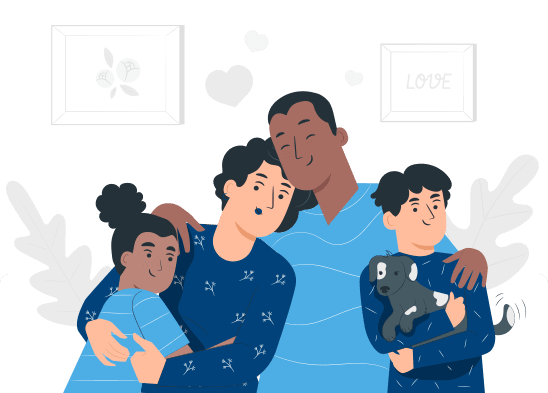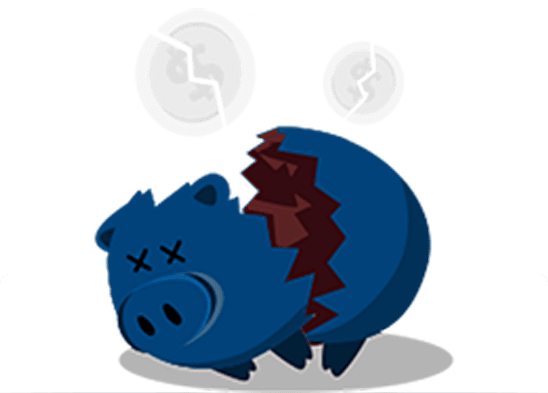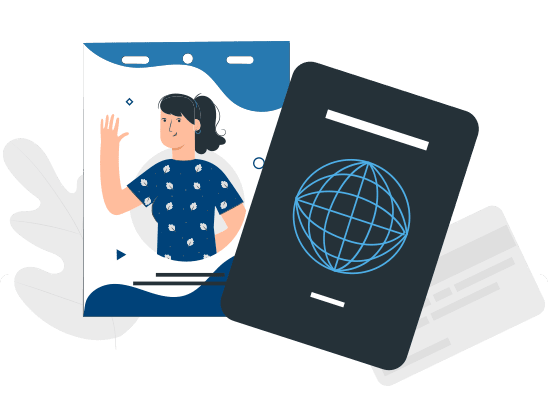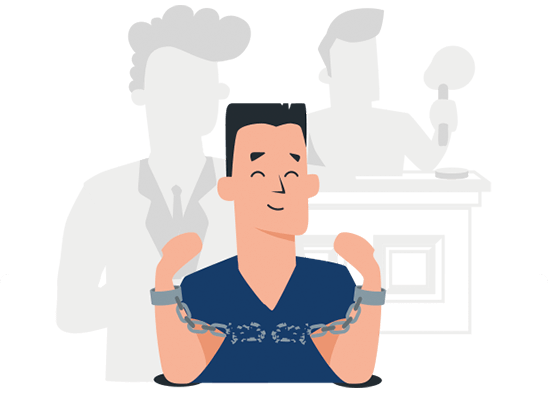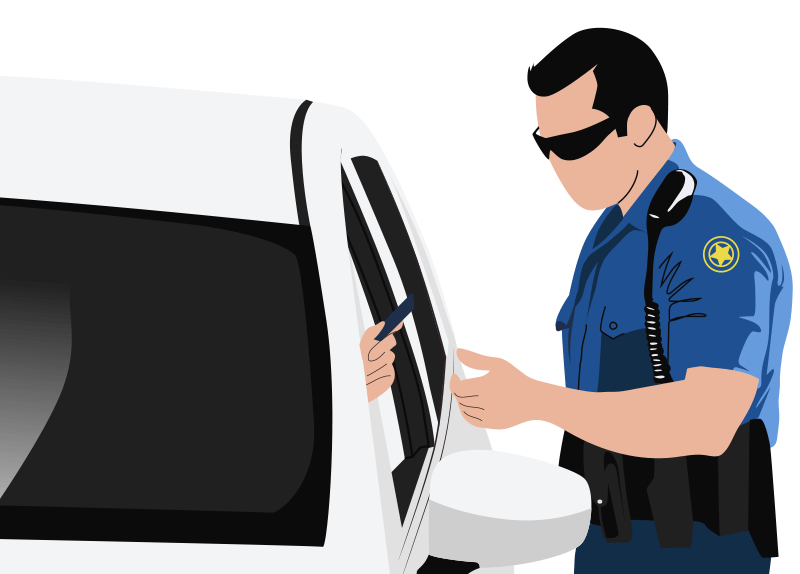Bankruptcy
Types of Bankruptcies
by Philip Ahn, Attorney

If you are in serious debt, you’ve likely been searching for debt-relief options. When no other options are viable, many people consider filing bankruptcy. Many types of bankruptcies are available, but one usually fits your situation better than others.
Most individuals file for Chapter 7 or Chapter 13 bankruptcy. They are the most popular options, but they are not the only types available. Individuals and businesses may also qualify for other kinds of bankruptcy, such as Chapter 11, Chapter 12, and Chapter 15.
Depending on your circumstances, you may be challenged to choose the best option for your situation. We can connect you with a knowledgeable local bankruptcy lawyer to help you decide the bankruptcy option that fits you best.
How Bankruptcies Work
Bankruptcy is a court proceeding in which a judge and court-appointed trustee closely examine the debts and liabilities of people and businesses that can’t meet their financial obligations. Depending on the type of bankruptcy you file, the court will decide which debts can be discharged, which debts you no longer have to pay, repayment plans, and the overall bankruptcy plan.
Filing bankruptcy offers one perk: the court issues an “automatic stay” order, giving you a breathing spell from creditors. It stops collection efforts, harassment, and all foreclosure actions. The stay can help reduce or stop some creditor calls, wage garnishments, and lawsuits.
An automatic stay can also help to stop pending foreclosures, evictions, and repossessions. Note that the automatic stay is temporary until a final decision is made on your bankruptcy case.
While bankruptcy can do a lot, it is mostly for certain types of unsecured debts (i.e., credit cards, personal loans, medical debt, etc.). However, there are many things it can’t do. Some examples include:
- Prevent a creditor from eventually foreclosing or repossessing property
- Eliminate or reduce child or spousal support payments
- Eliminate student loans (except for rare exceptions)
- Eliminate tax debts (except for rare circumstances)
- Eliminate other types of secured or non-dischargeable debts
- Eliminate fraud-related debts
Chapter 7 – Liquidation
Also known as “straight bankruptcy,” Chapter 7 is the most common form of bankruptcy in the U.S. If you qualify, this form of bankruptcy appoints a trustee to supervise the sale of property and assets to pay all or a portion of unsecured debts.
The main draw of Chapter 7 is that it eliminates certain types of unsecured debt. In addition, it’s one of the fastest forms of bankruptcy, as it only takes a few months to discharge.
Not all debt can be discharged in Chapter 7. Exceptions include student loans, child support, taxes, etc. Additionally, you will likely lose some of your assets and have negative information on your credit report many years after your discharge.
Do I Qualify for Chapter 7?
To qualify for Chapter 7, you must earn less than your state’s median income level and prove you can’t pay back your debt in part or whole. If your income is above the median level, you must pass a “means test” to show that you do not have enough disposable income to pay debts.
Many individuals who qualify for Chapter 7 still choose against this option because they want to keep all of their assets. For those people, Chapter 13 may be a better option.
Chapter 13 – Debt Repayment
Chapter 13 works a bit differently than Chapter 7. It gives individuals the chance to keep their property and assets so long as they partially or completely repay debts according to the repayment plan.
If you are unable to pay debts but would like to keep your property, Chapter 13 may be the best option. Though any type of bankruptcy will negatively affect your credit, Chapter 13 may be the most favorable option. It will generally be removed from your credit record after seven years, and you have the opportunity to file Chapter 13 again in a little as two years if necessary.
Chapter 13 Repayment Plan
Generally, repayment plans can last as long as five years. Once the terms of the repayment plan are met, your debt is discharged, even if you have only partially repaid your debts. Your bankruptcy lawyer will negotiate the terms of the repayment plan on your behalf, and Chapter 13 offers more flexibility than Chapter 7.
However, if you don’t make your payments, your appointed trustee can ask the judge to dismiss your bankruptcy case, which means you will not get the debt relief you are seeking.
Is Chapter 7 or 13 Better?
Your best bankruptcy choice will depend on your circumstances. Chapter 7 is typically the best option for low-income individuals who have no means to pay back unsecured debt. Usually, people without significant assets file Chapter 7. While it can be a great option, many who file for bankruptcy don’t qualify for Chapter 7 due to excessive income.
Chapter 13 can be an excellent option for those who want to keep their assets and property while making payments via a court-approved repayment plan. One drawback of Chapter 13: It can take three to five years for your debt to be discharged.
If you are unsure which bankruptcy option is best for you, consult with a bankruptcy lawyer.
Chapter 11 – Business Reorganization
Chapter 11 bankruptcy, often called a “reorganization bankruptcy,” is usually for business owners. It allows them to continue operating their business while they reorganize their finances to pay debts.
In rare cases, individuals can also qualify for Chapter 11. It may be a good option for people who do not want to liquidate their assets or have too much debt to be eligible for a repayment plan under Chapter 13.
Chapter 11 can also help reduce interest rates and extend debt repayment terms, which could equate to lower monthly payments. It’s important to note that Chapter 11 is statistically not as successful as other types of bankruptcy filings. Generally, it is the last option for those who owe a significant amount of debt but do not qualify for different types of bankruptcy.
How Long Does Chapter 11 Take?
There is no time limit for completing a Chapter 11 repayment plan. However, most programs take between six months and two years. One major drawback of Chapter 11 is the cost. Filing fees start at $1,717.
Since Chapter 11 is so complicated, lawyer fees are typically much higher as well. Many spend more than $10,000 for Chapter 11. It’s usually a good option for high net worth individuals who are having issues paying their debts.
Other Types of Bankruptcy
The bankruptcies mentioned above are the most common. They make up the majority of bankruptcies filed each year, specifically Chapter 7 and Chapter 13. However, there are a few exceptions and caveats in the Bankruptcy Code for debtors in certain situations.
Chapter 12 – For Farmers and Fishermen
Chapter 12 bankruptcy is similar to Chapter 13. However, it focuses explicitly on family farmers and family fishermen who meet specific criteria to propose a repayment plan that lasts for three to five years.
Since there is a seasonal nature to farming and fishing operations, Chapter 12 allows for flexible repayment plans. It is also helpful for multi-generational families wherein the parents have guaranteed debts for an extended period.
Chapter 12 has undergone several changes in recent years. It can be helpful to consult with a bankruptcy lawyer or accountant to review the Bankruptcy Code changes.
Chapter 15 – For Foreign Creditors
Chapter 15 is a recent addition to the federal Bankruptcy Code. It was created for foreign debtors, creditors, and assets involving more than one country. In general, Chapter 15 is not used for bankruptcies in the U.S. It is an ancillary event that happens in concert with a bankruptcy event occurring in the individual’s home nation.
Chapter 9 – For Municipalities
Chapter 9 is not for individuals or businesses. It is for municipalities like cities, school districts, counties, etc. If they can’t satisfy their debt via taxes, cuts to services, or bonds, they may file for this type of bankruptcy protection.
Who Pays for Bankruptcies?
Filing fees, credit counseling fees, and legal fees are usually absorbed by the individual or company filing for bankruptcy. In rare cases, fee waivers may be available for those who earn less than 150% of the federal poverty guidelines. Fee waivers are typically reserved for those who can prove they can’t pay the filing fee.
Overall, the debts not paid through the sale of assets or a repayment plan will go unpaid. Creditors who are owed money can petition the courts to seek compensation, but the request is not approved in many cases.
Do I Need a Lawyer to File for Bankruptcy?
Technically, no. You are not required to hire a lawyer to file for bankruptcy. Filing on your own is called pro se. However, seeking a bankruptcy lawyer’s advice is highly recommended because of the long-term legal and financial implications of filing a bankruptcy.
Some of the ways a bankruptcy lawyer can be helpful include:
- Advise you whether you should continue to pay creditors
- Advise you what chapter to file
- Advise you on what debts can be discharged
- Explain federal and state bankruptcy laws and procedures
- Help you complete and file your forms
- Help you keep certain assets and properties after you file
- Offer overall assistance with most aspects of your bankruptcy case
If you file on your own, the courts will expect you to follow all court rules and procedures. Mistakes can lead to delayed proceedings and denied petitions. Since most lawyers offer a free initial consultation, it can be helpful to take advantage of it.
How Much Does It Cost to File Bankruptcy?
Bankruptcy filing fees can range between a few hundred dollars to more than $2,000. Exact costs for bankruptcy lawyers will depend on the type of bankruptcy you file, the state you live in, and the specific circumstances surrounding your debt.
Factors that can add to fees include:
- You have multiple sources of income
- You are filing for personal and business bankruptcy
- You have an extensive number of creditors
- You have filed for bankruptcy in the past
- You are trying to stop a foreclosure or repossession
- You have non-dischargeable debts such as student loans, child support, spousal support, or past due taxes
In most cases, lawyers demand upfront payment for bankruptcy. They will often not move forward with your case until they are paid in full. The longer it takes for your lawyer to act on your behalf, the more vulnerable you are to creditors attempting to collect debts while you are trying to raise money for your legal fees.
How Can Unbundled Legal Help Aid Me?
Many people face the catch-22 of not being able to afford to file for bankruptcy. While court and filing fees can be waived or reduced in some cases, the cost of legal representation will likely be expensive.
With Unbundled Legal Help, our network of bankruptcy lawyers offers pay-as-you-go programs that can help jump-start your bankruptcy proceedings while potentially saving you thousands of dollars in upfront fees.
Unbundled Legal Help lawyers also offer virtual consultations so you can work closely with your lawyer from the comfort of your home. Before you pay all of your legal fees for bankruptcy up front, instantly connect with a bankruptcy lawyer in your area to learn how Unbundled Legal Help can comfortably and affordably help with your bankruptcy needs today.

